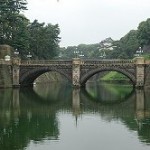A trip to Tokyo’s Imperial Palace should be on the itinerary of every tourist who wants to learn more about Japan’s history and culture.
The Imperial Palace was formerly the site of Edo Castle, the residence of the Tokygawa shogun who ruled Japan from 1603 to 1867.
Today it’s home to the Emperor of Japan. Moats and stone walls help to isolate it from the rest of Tokyo.
The palace is closed to the public, except on the New Years Greeting on January 2 and the Emperor’s birthday on December 23. However tourists can visit on most weekdays by joining a guided tour. Palace staff members conduct tours of its grounds at 10 am and 1:30 pm on weekdays, except during special occasions. The guides speak Japanese, but are happy to provide a complimentary English pamphlet and audio recording Westerners can follow along. Each tour takes around 75 minutes to complete.
The tour is free, but visitors must be approved by the Imperial Household Agency before entering the palace grounds. However thanks to an online form, this is a fairly simple process. However, it should be completed before you leave for Japan to ensure adequate time for processing.
Allow five to ten minutes to walk from Tokyo Station to Kikyomen gate. Palace officials will check off your name before permitting you to enter the grounds. The first stop is Someikan Hall, where guests can watch an information video and grab a few Japanese mementos at the souvenir shop.

Nijubashi Bridge at the Tokyo Imperial Palace
Highlights of the tour include the Chowaden, the longest of the palace’s seven buildings, the views from Tetsubashi Bridge, the much-photographed Nijubashi Bridge, and the tree-lined Yamashitadori Street. The palace is particularly pretty during spring when the cherry blossoms are in bloom.
The Imperial Palace may disappoint some tourists who have seen Japan’s stunning temples and beautiful gardens. Its style is quite simple and plain in comparison. However it’s worth seeing for its historical and cultural significance, especially considering that it’s free to join the tour.
